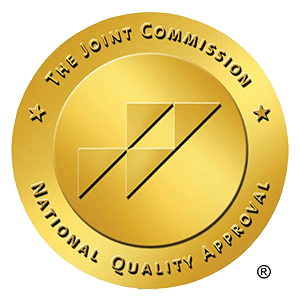
Adolescence often brings big emotions and confusing choices. Feeling depressed while using substances can make everything harder. This page speaks directly to teens and families who want clear, respectful information. You will find simple signs to watch for and a straightforward look at treatment options. I explain therapy, medication, and family involvement in plain language. The Ohio Center for Adolescent Wellness provides programs that address both mental health concerns and substance use. These services are designed to give teens and families practical tools and clear information. The aim is to help you understand available options and decide on the most appropriate next step.
What Links Depression and Addiction in Teens?
Depression and addiction often occur at the same time in teenagers. Many young people use alcohol or drugs to reduce intense sadness or anxious feelings. At first, substance use may seem to make the mood more bearable during hard times. Those short relief moments often fade and leave stronger negative feelings behind.
Teen brains are still developing, which affects how mood and reward systems work. Genetics can increase a teen’s sensitivity to stress and substance effects. Early stress, trauma, or major life changes can raise the chance of both conditions. Peer pressure and easy access to substances make experimentation more likely. Repeated use changes brain pathways that control motivation and emotional balance. As a result, what began as coping can become a pattern that feels hard to stop.
Understanding this connection helps families and teens respond with clarity and patience. Knowing why both problems appear together makes planning treatment more straightforward. Early intervention can reduce long-term effects and promote mood stability. Community programs and school counselors can spot issues and suggest next steps. Talking openly with a trusted adult often leads to helpful resources and timely help.
What Are the Signs of Depression in Adolescents?
Depression symptoms in teens can appear in ways that are different from what many people expect. Depression in teens may not always appear as persistent sadness. Sometimes, the signs are subtle or show up in changes to mood, behavior, or physical health. Understanding these signs can help families and friends know when to encourage a teen to seek help.
Common signs of depression in adolescents include:
- Increased irritability, anger, or frustration instead of quiet sadness.
- Loss of interest in hobbies, sports, or friendships.
- Sleeping far more than usual or having trouble sleeping at all.
- Noticeable changes in appetite or weight.
- Declining grades or trouble focusing in school.
- Low energy, even after a full night’s rest.
- Talking about hopelessness, worthlessness, or feeling like a burden.
- Withdrawing from friends, family activities, and social events.
- Frequent headaches, stomachaches, or other unexplained physical discomfort.
If these symptoms last most days for several weeks, it’s important to get a professional evaluation. Speaking with a trusted adult or school counselor can help begin the process of getting appropriate treatment.
What Are the Signs of Addiction in Teens?
Addiction traits in teens don’t always appear suddenly. In many cases, it starts subtly and gradually changes how a young person thinks, feels, and acts. These shifts can be emotional, social, or physical, and they often affect school, relationships, and daily routines.
Possible indicators of addiction in teens may include:
- Becoming defensive or angry when asked about habits or whereabouts.
- Spending much more time alone or with new, unfamiliar peers.
- Sudden drop in motivation for schoolwork or responsibilities.
- Making excuses to avoid family interactions or activities.
- Unexplained changes in appearance, such as poor hygiene or a different clothing style.
- Frequent requests for money without clear reasons.
- Avoiding eye contact or becoming unusually withdrawn in conversations.
- Engaging in unsafe activities they previously avoided.
- Physical symptoms like unusual fatigue, nausea, or changes in coordination.
When several of these changes occur together, it’s important to look deeper and consider professional evaluation. Early attention can prevent the problem from growing.
Why Does Treating Both Depression and Addiction Together Help More?

Treating both problems at once improves outcomes for teens. When only one issue is treated, the other often undermines recovery efforts. For example, untreated depression can lead a teen back to using substances. Similarly, unmanaged substance use can prevent mood improvements during therapy. Integrated treatment addresses mood symptoms and substance triggers at once. It helps teens develop skills to handle cravings and manage difficult emotions.
A combined plan also helps clinicians choose safer medication strategies for youth. Family programs and peer groups can rebuild connections and reduce isolation. Coordinated planning prevents mixed messages from different providers or programs. This approach gives teens consistent tools to use at school and at home.
Focusing on both issues together shortens the path to steady improvement. It also helps families feel more confident in what to do next. Programs that coordinate mental health and substance services tend to lower relapse risk. They teach relapse prevention and mood regulation skills in the same setting.
What Does Dual Diagnosis Treatment Look Like for Teens?
Dual diagnosis treatment focuses on managing depression and substance use in a combined approach. It starts with a full assessment of mood, behavior, school, and family life. Clinicians ask about sleep, appetite, friends, and any risky behaviors. Treatment plans are tailored to the teen’s age, needs, and daily routines.
Therapy may include individual sessions focused on mood and coping skills. Group sessions teach peer-based problem-solving and relapse prevention skills. Family meetings focus on improving communication, setting healthy boundaries, and restoring trust within the home. Medication can be part of the plan when the benefits outweigh the risks for teens. Programs vary from outpatient visits to day treatment and residential programs.
Step-down options help teens move from intensive programs back to school life. Progress is measured in mood stability, school attendance, and healthier choices. A flexible plan adapts as the teen grows and faces new challenges. Treatment plans evolve as teens change, with regular reviews and updates. Follow-up plans help with school reintegration and long-term relapse prevention.
How Do Therapies Help Adolescents Heal?
Therapy gives teens practical tools for handling emotions that can feel overwhelming. Cognitive behavioral therapy helps them notice unhelpful thoughts and replace them with healthier patterns. Dialectical behavior therapy adds strategies for emotional balance and handling stress. Motivational interviewing encourages teens to find their own reasons for making changes. Skills training builds steady routines for sleep, nutrition, and activity, which can help stabilize the mood.
Group therapy can bring teens together to exchange experiences and gain insight from others who face similar challenges. Role-playing and guided practice help prepare for situations that might trigger setbacks. Sessions often address the transition back to school and ways to strengthen friendships that support well-being. Setting short-term goals helps teens see progress and stay motivated.
Therapists collaborate with educators and families so strategies work across different parts of life. Recovery tools are practiced in real-life situations, and brief exercises between sessions help reinforce new habits. Progress happens at the teen’s own pace, with trust as the foundation.
Is Medication Safe and Helpful for Teens?

Medication can sometimes help teens when depression is moderate to severe, especially if symptoms make daily life hard to manage. Before prescribing, providers carefully weigh the risks and benefits, considering age, health history, and specific needs.
Antidepressants may ease symptoms, making it easier for teens to participate in therapy and daily activities. In certain cases, medication for withdrawal or cravings is considered, but this is done very cautiously in adolescents. Regular follow-up appointments allow providers to monitor progress, check for side effects, and make adjustments if needed. Medication is never the only treatment; it is part of a broader, personalized plan that may include therapy, family involvement, and lifestyle changes.
Providers involve both parents and teens in every decision, making sure questions are answered and concerns are addressed. When paired with therapy, medication treatment can sometimes bring quicker relief and help teens feel more capable of working toward recovery.
How Can Families Best Help Their Child?
Families often play a key role in a teen’s recovery journey. Simple actions at home can increase stability and reduce daily stress. Keep predictable routines for sleep, meals, and homework to help structure days. Ask gently about feelings, and listen without interrupting or judging. Use clear, consistent rules and follow through with consequences when needed.
Encourage healthy activities, even if the teen resists at first. Attend family sessions to learn practical ways to respond to crises. Share information with school staff so educators can help track progress. Avoid blaming language and focus on small, achievable steps forward. Celebrate honest efforts that build toward more positive routines.
Parents benefit from learning stress management and modeling healthy emotion handling. Modeling calm problem-solving reduces household tension and promotes steadier routines.
Want Help? Contact Us Today
 If your teen is struggling with both depression and substance use, reach out for an assessment. We offer confidential consultations focused on questions families often ask. A trained clinician will listen and explain options in plain language. You can learn about therapy types, group programs, medications, and reasonable next steps.
If your teen is struggling with both depression and substance use, reach out for an assessment. We offer confidential consultations focused on questions families often ask. A trained clinician will listen and explain options in plain language. You can learn about therapy types, group programs, medications, and reasonable next steps.
We can help you arrange an initial assessment at a time that fits school schedules. Questions by phone, text, or online message are welcome, and privacy is respected. We can explain the steps for coordinating with schools and other providers. We respect teen privacy and explain confidentiality boundaries in plain terms.
If preferred, a trusted adult can join the first visit. Starting a conversation can reduce stress and make choices clearer. Contact us to explore options and plan a manageable first step.



